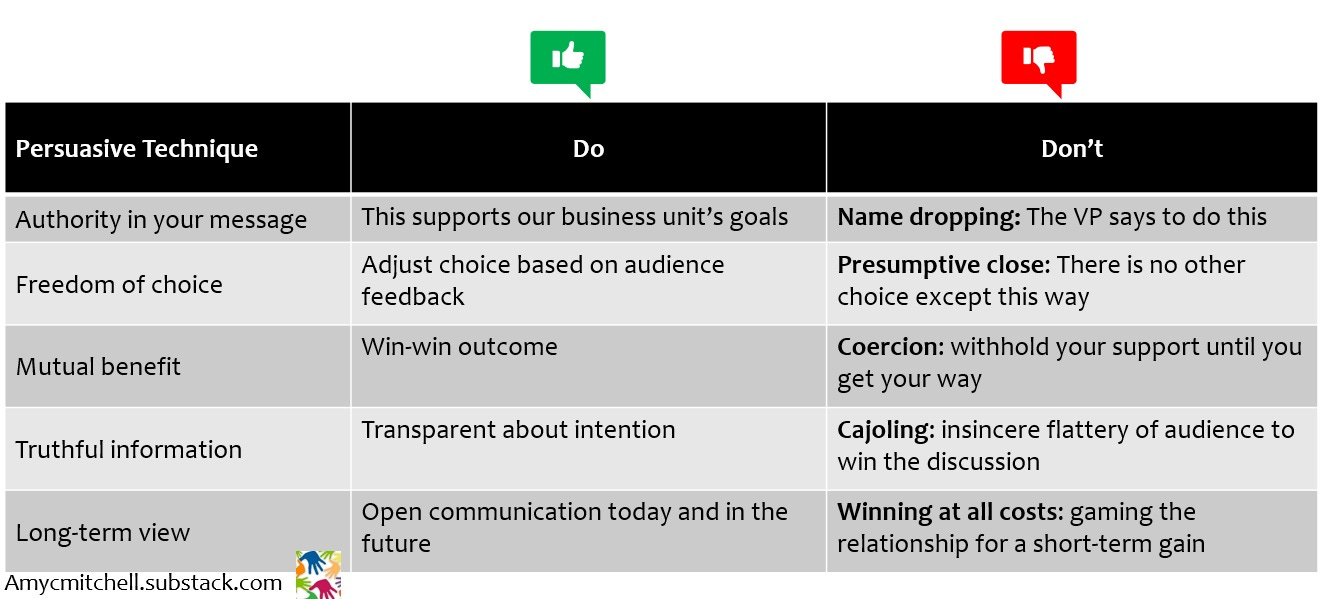You are perplexed that an obvious product change is being debated by key stakeholders. The lack of agreement is impacting your product's future.
In this situation, put aside your frustrations. You might need to increase your persuasion skills!
There is an old saying:
You can catch more flies with honey than with vinegar
A caring product manager is going to be frustrated by a lack of buy-in from stakeholders. Instead of showing your anger, work on your persuasion skills.
How can you be more persuasive without being manipulative?
Basics of Persuasion
Product managers deal with ambiguous situations frequently. In these situations, there are multiple opinions about solving the problem. As the product manager, you need to lead a diverse team to a decision. Reaching a decision and moving forward is more important than one of many right decisions. Coming down with a heavy-handed decision is going to repel the team. Waiting for the team to come around is going to take too long.
Persuasion is your key skill to convince the team to make a decision!
The components of persuasion are:
Craft a compelling message to each audience - know your audience's concerns and tailor your message to resonate with their interests and values
Build trust - demonstrate your expertise and present evidence to support your arguments
Be clear about what you want - be prepared to repeat what you want on multiple channels
Anticipate objections - this shows that you've thought through what you want
Engage with your audience - actively listen to their perspective and invite dialog
Follow up - reinforce your key points and address any concerns
Persistence and consistency go a long way!
Persuasive Techniques
You have likely seen good and bad persuasive techniques. When you are in persuasive mode, here are some common techniques:
Social proof - show that others support your message
Reciprocity - offering something of value can encourage reciprocity from your audience
Scarcity - limited availability or a deadline can motivate action from your audience
Authority - bring expert opinions to the message
Including these techniques in your message is helpful for your audience.
Remember to use the techniques carefully. You don't want to be manipulative or insincere.
Avoiding Insincerity and Manipulation
Persuasive techniques can go wrong! Here are a few common mistakes that product managers make:
Name-dropping - saying the big boss wants this
Presumptive closing - assume it is your way and no other choice
Coercion - withholding your support until you get your way
Cajoling - insincere flattery to convince the audience to accept your point of view
Win at all costs - turning the message into a win or lose for short-term gain
You can avoid these manipulative mistakes by focusing on shared goals and long-term relationships.
Conclusion - Winning Hearts and Minds with Persuasion
Solving a problem together with respect and transparency leads to the best long-term results. Persuasion allows you to build trust and rapport with your audience while finding win-win solutions.






